 home about news archive cv publications
home about news archive cv publications
OSRAM ART PROJECTS

OSRAM ART PROJECTS is the cultural program of the lighting company with its headquarter in Munich. Supporting contemporary art is the program's main focus. This is achieved by the work of the gallery and the expansion of the company's art collection.
With the project SEVEN SCREENS, OSRAM's activity reaches out into the public sphere. The seven LED-stelea are a digital platform for regularly changing art projects.
The company's cultural activity is annualy documented in a catalgue.
>>www.osram.com/art
SEVEN SCREENS |
COLLECTION |
GALLERY |
SEVEN SCREENS
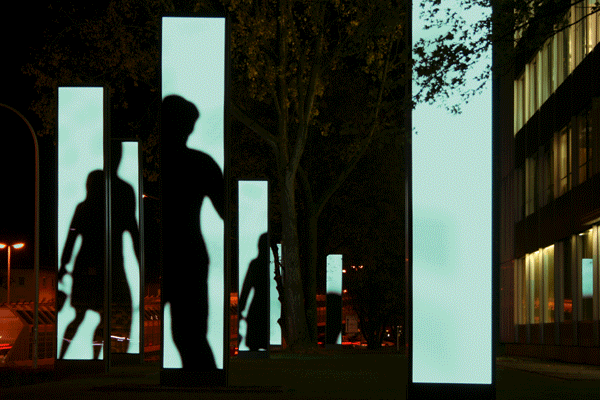
Seven six-meter-high light boxes, fitted out on both sides with LED systems stand on the green lawn
between the headquarters of OSRAM GmbH, an architecture-historically significant office building
from the 1960’s, and the heavily frequented Mittlerer Ring (Candidplatz) in the southern part of the
State Capital of Munich. The spatial alignment of the light box is inspired by Planck’s color curve. The
light boxes correspond both in their design as well as their arrangement to the form of the façade of
the office building constructed in 1965 by Walter Henn, a prime example of the “international style” of
that time.
The light boxes are conceived as a new light-technological platform for digital art projects in public
areas, which can be fitted out with static or moving, classical or interactive images. The basis of this
concept is a curatorial light show: up to twice annually future artists will be invited by OSRAM to
develop venue-specific works.
Concept: OSRAM Light Consulting in collaboration with Christian Schoen
Curator: Christian Schoen
Artists:
coming up: Herlinde Koelbl (November 2011 - May 2012)
Saskia Olde Wolbers (May - Dezember 2011)
Harun Farocki (May - November 2010)
Rúrí (April 2009 - November 2010)
Bjørn Melhus (November 2008 - April 2009)
Anouk De Clercq (April - November 2008)
ART+COM (November 2007 - April 2008)
Diana Thater (June - July 2007)
Haubitz+Zoche (April - November 2007)
Mader | Stublic | Wiermann (November 2006 - April 2007)
interview with Christian Schoen (2008/09). Video: Frank Sauer
Mader | Stublic | Wiermann
Reprojected, 2006
Mader, Stublic and Wiermann have already caused quite a stir this year with “twists and turns”, the display for the Uniqa building in Vienna.The “spots” media façade display at the start of next year in Berlin is a continuation of their lighting installations in the public arena.They have set high standards with the first show on the Seven Screens in Munich.“Reprojected” is a location and media-specific examination of our visual perception.The artists create a virtual space around the installation of the lighting masts.What is assumed to be an external light source seems to spotlight the masts.The surrounding space and the architecture of the Osram building are included in the perception.The impression is one of simultaneously being in a real and virtual space, with the masts acting as the interfaces between these two worlds.In their complex mutual programming they suggest an artificial reality which lies not beyond but inside the physical reality.Computer-generated people stand in front of this light and are displayed as shadows on the masts before they disappear into the shadows of the surrounding space.
----------------------------------------------------------------------------------------------------------
Rows of houses in a fictitious metropolis are overflowing. The facades of high-rise buildings and bizarre constructions are reflected in the water, the streets seem empty and deserted. 2027, the title of this video installation of Haubitz + Zoche relates to the year of the plot in Fritz Lang’s film Metropolis, which plays exactly 100 years from it’s publication year. A distance that, facing our temporal closeness, attends to the negative futuristic visions we have now approached.
Maybe the slow, dreamily blurring recordings of the various house models can be read as distorted reference to current experiences of Langs urbanistic dystopia. With them the scope of ideas between revolutional architecture, modern functionality and post moderness is measured; But only to eventually dissolve in the diffusely moving blue water far from time or space. In the same unreal and upside down picturesque scope the swimmers enact with one another, seemingly searching for support in weightlessness and control in mayhem.
----------------------------------------------------------------------------------------------------------
Diana Thater
OFF WITH THEIR HEADS, 2007
Enormous chess figures, eleven moves executed by giant hands: the royal game in the fantastic world of Alice in Wonderland. The renowned American video and installation artist Diana Thater (*1962, Los Angeles) presents her installation within the context of the Munich Opernfestspiele Festspiel+ on seven light stelae in front of the ORSAM building as a satellite of the exhibition "... drawling, stretching and fainting in croils ..." on view in the Pinakothek der Moderne. The work, developed specifically for the Seven Screens, deals with Lewis Carroll’s fictional figure ‘Alice,’ as do all the other works in the show.
In her work, Thater explicitly wishes to transform the non-narrative. As early as seventeen years ago, this approach led her to focus on pictures of animals. It is not the narrative that the artist seeks. She resists the belief that her medium, the video, must have a narrative character since, according to her artistic opinion, the actual subject of all videos is time and its inevitable course. An abstractly constrained video, such as OFF WITH THEIR HEADS, abstracts time itself in its persistence and translates it into an abbreviation.
Chess provides the possibility of portraying the universality of daily life - with regard to such things as rules pertaining to coexistence, maneuvers of exchange, loss, etc. - without having to fall back on a story. In her video Thater approaches the inherent meaning of chess and the game. “The game,” maintains the artist, “has a beginning, a middle and an end. However, like life, the game does not tell any important story.”
----------------------------------------------------------------------------------------------------------
ART+COM
Reactive Sparks, 2007
A reactive video installation, which responds to the flow of traffic on site in real time, will be mounted on the OSRAM SEVEN SCREENS. The traffic passing the OSRAM building located on the Mittlerer Ring in Munich was the point of departure for the concept of the site-specific installation Reactive Sparks created by the Berlin design studio ART+COM.
In the project Reactive Sparks every vehicle that drives past the SEVEN SCREENS is individually tracked, thereby triggering a clearly visible reaction on the stelae for drivers and pedestrians. The installation’s basic theme is movement energy, which finds its visual counterpart in light, thus becoming a global-social metaphor for human vitality. A base light on the stelae represents the flow of traffic: the more dynamic the flow of cars is, the higher the light waves beat.
----------------------------------------------------------------------------------------------------------
Anouk De Clercq
Motion for Newton, 2008
Movement is the focus of Anouk De Clercq’s new video installation Motion for Newton. Inspired by the famous physicist’s laws of motion, the Belgian artist allows lines and forms to affect each other in an interplay with their direct environment.
For her installation of the SEVEN SCREENS De Clercq developed a video loop, whose point of departure was an analysis of the OSRAM building’s architecture. The artist thus created a work that was specifically developed for its location and those passing by the site in their vehicles. The artist refers to her new work as Motion for Newton. This title stands for a “constructive mobile,” which is inspired by the vertical forms of the SEVEN SCREENS, as well as by the city’s architecture, high rises and sky scrapers. Forms encircle each other in continuous motion. The work’s main theme is the moving body in relation to its environment. The SEVEN SCREENS are transformed into "motion sculptures," which become a homage to Isaac Newton. The scientist and author of Philosophiæ Naturalis Principia Mathematica, published in 1687, described the universal theory of gravitation and the laws of motion and thereby laid down the foundation for modern engineering.
----------------------------------------------------------------------------------------------------------
Bjørn Melhus
Screensavers, 2008
Screensavers is the name the internationally acclaimed media artist Bjørn Melhus has given his digital clones, which will populate the SEVEN SCREENS in front of the OSRAM Haus in the coming months. With his sound reactive computer animations, whose images and texts are generated from an actual radio program, the artist renders the everyday language of mass media visible.
This art project marks OSRAM’s first cooperative effort with the information radio station B5 aktuell, which will provide the material for the art installation on the seven LED stelae situated along the Mittlerer Ring in Munich. With the help of sound and speech recognition software, the artist will generate image and text sequences in real time from the current program of the information radio station B5 aktuell.
Bjørn Melhus thinks far into the future with regard to both artistic contexts as well as technological concepts. The visual program sequences for Screensavers were developed and created together with specialized programmers. By means of a software program, the words spoken on the radio are partially transformed into image and text sequences that then appear on the stelae with only minimal delay. In the case of a few predetermined key words - such as “art,” “catastrophe” or “traffic jam” - additional image and text sequences that provide visual comments on the spoken words are triggered. Comic book heroes, the Screensavers, appear on the SEVEN SCREENS during the brief presentation breaks.
----------------------------------------------------------------------------------------------------------
The Icelander’s works can be associated with three thematic concepts: time, relativity and the cosmos. The installation Aqua – Silence unifies these three themes by means of its concentration on aspects of transience. Rúrí gives her socio-critical statements an almost lyrical form. Water and time are amorphous, mobile, near invisible and yet both determine human existence at a fundamental level. The sequence of images presented on the SEVEN SCREENS portray the multiformity of water and are a reference to its mythical quality and its symbolic power, a trait shared by all cultures. At the same time, the artist urges the viewer to recognize the great value of this unique resource, as well as one’s own transitory nature in the context of the global perspective.
----------------------------------------------------------------------------------------------------------
Harun Farocki
Umgießen - Variation on opus 1 by Tomas Schmit, 2010
Umgießen (Re-pouring) refers to Tomas Schmit’s performance, Zyklus für Wassereimer (oder Flaschen) (Cycle for Water Buckets [or Bottles]), which he performed on 18 December 1963 in Amsterdam. The Fluxus artist knelt on the floor in a circle of empty milk bottles and poured water from one bottle into the next until all the water had spilled or evaporated. “The action,” claimed Farocki, “evaded symbolism ... it had no vital quality. It was akin to a Beckett play in the simplicity of its conclusiveness. Despite the uniformity of the event, there was a development; the anti-action found an end on its own initiative.”
Harun Farocki transformed the ritual action into a twenty-minute long, unedited film, translated for the spatial arrangement of the stelae. Each stele is assigned to a bottle. Farocki let the pouring be done by a robot, whose arm wanders through the expanded pictorial space, executing the unspectacular act of re-pouring.
----------------------------------------------------------------------------------------------------------
Saskia Olde Wolbers
Cellule, 2011
Cellule is inspired by the novel, À rebours (Against the Grain), written by the French writer Joris-Karl Huysmans in 1884: The novel describes how the noble protagonist retreats into the isolation of his own four walls and, thus, into his own imaginative world. The home of the ailing aristocrat Eremit is the setting of Olde Wolbers’ video. As in her previous video works, the artist, whose works are analogue, built a model of the house for Cellule that functions as a modular, portable space imbued with streaks of color. The duke’s cell, a refuge from the coarseness and banality of everyday life, is the central motif of inner projections and is staged by Olde Wolbers in dramatic contrast to the SEVEN SCREENS’ surroundings. She counters the hectic traffic and the fleeting human presence with surreal contemplative images that give the viewers the option of filling the open space with their own imagination.
----------------------------------------------------------------------------------------------------------
Herlinde Koelbl
You have taken away my heart, with one look you have taken it, 2011
The tenth project for the SEVEN SCREENS, which is to celebrate the 5th anniversary of the public art platform, is dedicated to the human being. Herlinde Koelbl’s central theme is the importance of seeing. Everything begins with a look at the world and a look at one’s self: recognizing, perceiving, seeing, communicating. Her installation „You have taken away my heart, with one look you have taken it“ returns us to the origin of perception and the meaning of light, which provides the basis for the SEVEN SCREENS. The title of her installation was inspired by Solomon's Song of Songs.
© OSRAM ART PROJECTS / artists
GAEG: Thomas Huber/Wolfgang Aichner
Spielverlauf, 2012
This special composition was commisioned on occasion of the Football Champions League Final in Munich. It plays with the branding colors of the home team of FC Bayern München and turns it into an artistic and playful scene.
© OSRAM ART PROJECTS / artist
OSRAM GALLERY
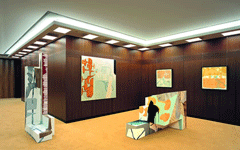
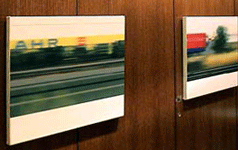
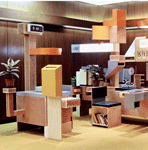
Director: Christian Schoen
Artists:
Wolfgang Kessler (painting), Klaus Oberer (photography), Petra Karadimas (digital photography), Anne Berning (conceptual painting), Rolf Poellet (painting), Fides Becker (painting), Tobias Regensburger (sculpture, installation), Siegrid Nienstedt (painting), Yehuda Altmann (photography), Gabriele Basch (painting), Wolfgang Stehle/Martin Wöhrl (sculpture/installation), Stefan Heide (painting), Julia Kissina (photography), Herlinde Koelbl (photography), Stefan Hirsig (painting), Peter Senoner (sculpture), Pia Linz (painting), Helmut Geier (painting), Christian Frosch (painting), Caroline von Grone (painting), Davide Cantoni (painting, drawing), Heinrich Gartentor (concept art), Carlos de Los Rios (painting), Mojé Assefjah (painting), Gabriela Fridriksdottir (painting, drawing, sculpture), Nathalie Grenzhäuser (photography), Lucia Dellefant (concept art), Oliver Westerbarkey (concept art), Léopold Rabus (painting), Annegret Hoch (painting), Stefan Wischniewski (concept art), Evil Knievel (concept art).
Opening hours:
Mon - Frr, 9am - 8pm
Hellabrunner Strasse 1
81543 Munich
>> www.osram.com/art
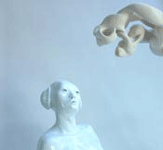
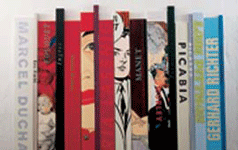
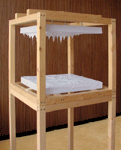
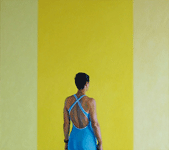
Catalogues:
 |
OSRAM SEVEN SCREENS German/English (Hatje Cantz) |
Catalogue 2001/2002 <PDF> Catalogue 2003/2004<PDF>
Catalogue2002/2003 <PDF> Catalogue 2004/2005 <PDF>
Catalogue2006/2007 <PDF> Catalogue 2007 <PDF>
Catalogue2008 <PDF>
OSRAM ART PROJECTS
Dr. Christian Schoen
Head
Hellabrunner Str. 1
81543 Munich
GERMANY
www.osram.com/art